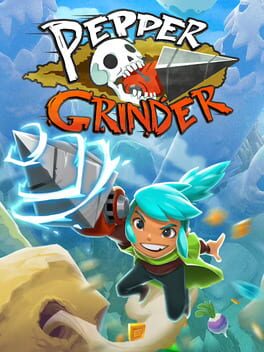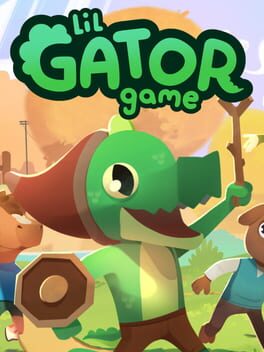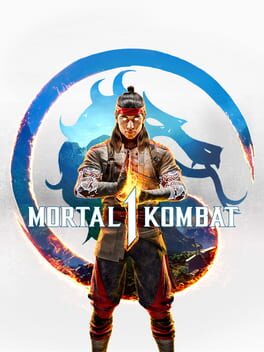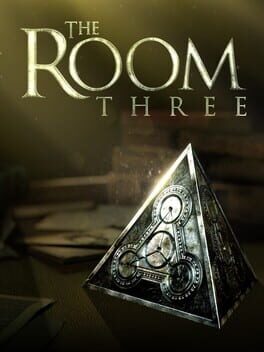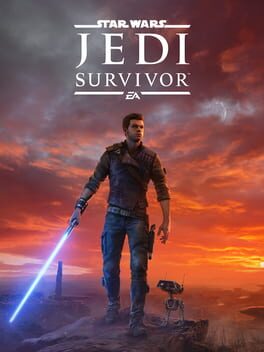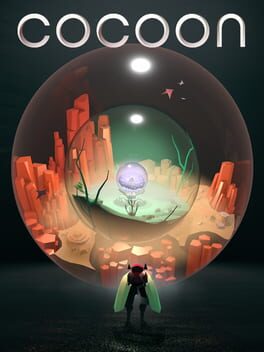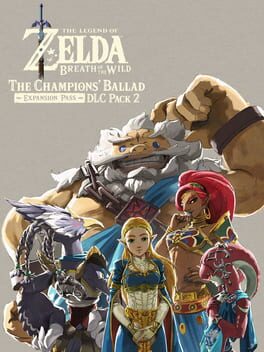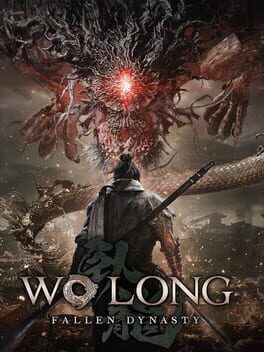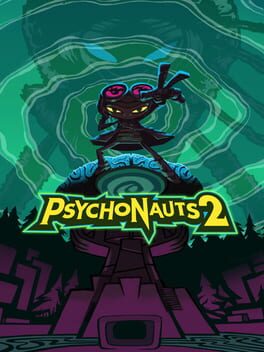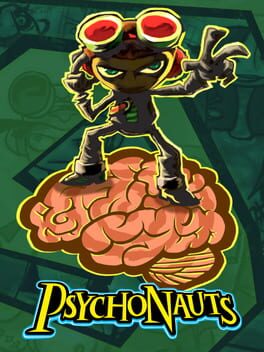ipcoleman
30 Reviews liked by ipcoleman
Pepper Grinder
2024
Pepper Grinder
2024
Lil Gator Game
2022
Completely charming. The writing is hilarious and feel good while avoiding schmaltz, reminding me a bit of the humor in Frog Detective except a little less “lol random.” It captures a child-like sense of play so well, with grown-up responsibility peeking through at times to ground it in a sense of reality.
It also bests Frog Detective for me by having gameplay that steers well clear of ever just being a tedious vehicle for its writing. Instead, it’s similar to A Short Hike’s concise distillation of Breath of the Wild’s open-world brilliance. Lil Gator Game is slightly less minimalist compared to A Short Hike, which I appreciated but wouldn’t say was strictly good or bad; overall its a pleasantly similar experience.
It also bests Frog Detective for me by having gameplay that steers well clear of ever just being a tedious vehicle for its writing. Instead, it’s similar to A Short Hike’s concise distillation of Breath of the Wild’s open-world brilliance. Lil Gator Game is slightly less minimalist compared to A Short Hike, which I appreciated but wouldn’t say was strictly good or bad; overall its a pleasantly similar experience.
A great surprise and one of the best metroidvanias in a while. The traversal skill set is a nice mix of the familiar and the new, both in what you get to do and how you control it; “phase changing” with a stick click during platforming segments is particularly novel in how it asks you to pat your head while you rub your stomach. The optional platform challenges are nice in how they often look truly intimidating but are usually conquerable pretty quick without devolving into tedious retries. It feels great every time you nail one the first time through.
The Persian-themed environments that get traversed are thoughtfully detailed, and each area is distinct enough in appearance and threat type to stay interesting through the substantial playtime. The story is solid as well, evoking a lot through its occasional cut scenes and a memorable cast. The routine combat is satisfying and deeper than expected, though found the boss fights more stressful than fun.
The Persian-themed environments that get traversed are thoughtfully detailed, and each area is distinct enough in appearance and threat type to stay interesting through the substantial playtime. The story is solid as well, evoking a lot through its occasional cut scenes and a memorable cast. The routine combat is satisfying and deeper than expected, though found the boss fights more stressful than fun.
Mortal Kombat 1
2023
I played this as a single player game, which likely isn’t how it’ll be experienced by its biggest fans, but it’s still a fun time outside of the online versus mode. The moves feel easy enough to pick up and satisfying to pull off, and there’s apparent depth for anyone interested.
Visually, this is by far the most high fidelity fighting game I’ve ever played, with environments and character designs that are richly detailed in addition to often looking photorealistic. The facial animation in the “kampaign” cinematics is astounding, though the performances are mostly amateur enough that capturing every little nuance is often more distracting than affecting.
The plot is nostalgically reconstructing the backstory of the early games (again), especially MK2 and 3, and that’s entertaining for a while, if also long-winded. Eventually, though, it collapses into the same halfhearted gesturing at multiverse nonsense that so many big branded stories default to right now. The dialogue is also generally bad, not just in a hammy way, but in an “I can finish half the lines myself because they’re that tired and recycled” way.
Beyond the story mode, there’s the usual arcade tower with character endings, plus a time-sink seasons mode that seems like an okay carrot to keep solo players interested but also way too much of a service game/MTX store grind to grab me more than the couple of intro hours I tried.
Visually, this is by far the most high fidelity fighting game I’ve ever played, with environments and character designs that are richly detailed in addition to often looking photorealistic. The facial animation in the “kampaign” cinematics is astounding, though the performances are mostly amateur enough that capturing every little nuance is often more distracting than affecting.
The plot is nostalgically reconstructing the backstory of the early games (again), especially MK2 and 3, and that’s entertaining for a while, if also long-winded. Eventually, though, it collapses into the same halfhearted gesturing at multiverse nonsense that so many big branded stories default to right now. The dialogue is also generally bad, not just in a hammy way, but in an “I can finish half the lines myself because they’re that tired and recycled” way.
Beyond the story mode, there’s the usual arcade tower with character endings, plus a time-sink seasons mode that seems like an okay carrot to keep solo players interested but also way too much of a service game/MTX store grind to grab me more than the couple of intro hours I tried.
The Room Three
2015
The puzzle boxes and the environments they’re placed within are impressively intuitive to stumble through without ever feeling too stumping or too simple. Those environments have a nice eldritch theming that’s evocative without being too overbearing. The upgraded visuals of the PC version were nice, but I might try to play more of this series on a tablet with touch controls; seems like it might make the puzzles boxes feel even more tactile than they already do with a mouse.
An incredible experience, eventually, with highs and lows I haven’t experienced in any other game in a long while. I’ve also never particularly cared either way about mechs, and by the end of NG++ I was shocked to find myself fiddling with part selection for reasons other than pure effectiveness, and even applying custom paint and decals.
But…this is also a reminder that (after more than a decade of being comfortable with Souls games) learning how to have fun with a completely new type of From Software game can be miserable and infuriating for a long while. Sure, there were new quirks and challenges in the Dark Souls sequels/Bloodborne/Sekiro/Elden Ring, but “gitting gud” with the first one let me know how to do the same with the rest of them from their starts.
I went in to AC6 expecting something similar, only to find an opaque game language that offered no apparent help explaining why it was punishing me. I played it on rental, and during my first playthrough I nearly uninstalled+returned it at the initial helicopter boss, at BALTEUS, at CEL 240, and at the final boss for the Fires ending. Following what seems to be the experience for a lot of novice players, it was only discovering the gatlings+lasers tank build online that got me through BALTEUS and then mostly carried me through to the final boss. Swapping to the tank’s sludgy movement felt way less fun, but it was also a trap, effectively letting me opt for a damage race against strong enemies that the tank’s beefy life bar could consistently win, until the final boss flipped that plan on its head. I was left hopeless to figure out an entire playthrough’s slow skill gains all at once if I wanted to finish.
I eventually beat it, using a heavy but bipedal build whose “better than a tank” maneuverability tempted me into starting a second playthrough, which turned out to be easy enough until round 2 with CEL 240, where I again got close to calling it done. This time, the thing that hung me up was not realizing how strong hard-locking can be if you never mess with the camera. That’s an insanely basic game feel thing to let slip by players until the end of NG+! There’s so many similarly subtle stat and game feel concepts that can make this game feel awful and unresponsive until enough of it clicked in my head. Once that happened, though, the mechs are an absolute joy to pilot.
The story followed a similar trajectory for me. Initially it’s a half-assed seeming word salad of factions and pilot names, with basically nothing coherent aside from the broadest plot strokes. It’s also much more foregrounded than the evocative (but ignorable) storytelling I was used to from Souls games, which made its incomprehensibility more annoying. And then, slowly, during NG+ and especially NG++, the emotional stakes and interpersonal drama made itself clear and I found myself shocked to be charmed and emotionally invested in most of the cast.
Great game, and I look forward to having a consistently fun time with AC7+.
But…this is also a reminder that (after more than a decade of being comfortable with Souls games) learning how to have fun with a completely new type of From Software game can be miserable and infuriating for a long while. Sure, there were new quirks and challenges in the Dark Souls sequels/Bloodborne/Sekiro/Elden Ring, but “gitting gud” with the first one let me know how to do the same with the rest of them from their starts.
I went in to AC6 expecting something similar, only to find an opaque game language that offered no apparent help explaining why it was punishing me. I played it on rental, and during my first playthrough I nearly uninstalled+returned it at the initial helicopter boss, at BALTEUS, at CEL 240, and at the final boss for the Fires ending. Following what seems to be the experience for a lot of novice players, it was only discovering the gatlings+lasers tank build online that got me through BALTEUS and then mostly carried me through to the final boss. Swapping to the tank’s sludgy movement felt way less fun, but it was also a trap, effectively letting me opt for a damage race against strong enemies that the tank’s beefy life bar could consistently win, until the final boss flipped that plan on its head. I was left hopeless to figure out an entire playthrough’s slow skill gains all at once if I wanted to finish.
I eventually beat it, using a heavy but bipedal build whose “better than a tank” maneuverability tempted me into starting a second playthrough, which turned out to be easy enough until round 2 with CEL 240, where I again got close to calling it done. This time, the thing that hung me up was not realizing how strong hard-locking can be if you never mess with the camera. That’s an insanely basic game feel thing to let slip by players until the end of NG+! There’s so many similarly subtle stat and game feel concepts that can make this game feel awful and unresponsive until enough of it clicked in my head. Once that happened, though, the mechs are an absolute joy to pilot.
The story followed a similar trajectory for me. Initially it’s a half-assed seeming word salad of factions and pilot names, with basically nothing coherent aside from the broadest plot strokes. It’s also much more foregrounded than the evocative (but ignorable) storytelling I was used to from Souls games, which made its incomprehensibility more annoying. And then, slowly, during NG+ and especially NG++, the emotional stakes and interpersonal drama made itself clear and I found myself shocked to be charmed and emotionally invested in most of the cast.
Great game, and I look forward to having a consistently fun time with AC7+.
This is mindlessly pleasant for broad sections and competently includes familiar feeling Star Wars sights and sounds as well as a glutted mishmash of open-world action RPG systems you’ve seen in better games before. It’s a decent enough version of this sort of big budget IP-laden game, but it really pales in comparison to Spider-man 2 and it’s a shame I played that immediately before this.
And wow does it need to be edited down to about half its size (something it could learn from Spidey 2). There’s so many little systems and collectibles that feels included for reasons that aren’t “they’re consistently fun and fresh to complete.” There are so many boring collectibles dotted around in obvious and stupid locations; oh no, a T-branch in a hallway…guess it’s time to figure out which way is the advancing path so I can run to the end of the other path first to collect a shiny bit of nothing!
This is also a shockingly rough game technically (on PS5, not even the poorly regarded PC version). It hurts immersion so much to see the graphics oftentimes quickly painting themselves into place when coming out of the map+menu screens, to say nothing of how many times I got stuck in or under level geometry glitches, and ran into several occurrences where the textures seemingly all got dumped and left me in a black wire-framed void for several seconds. Worse than graphics stuff are the narrow strictures on intended traversal in a game that asks you to explore its environment using an air dash and double jump and gliders. Oops, you managed to get to a ledge for a collectible we didn’t intend on yet and you haven’t stopped at a save point in a while? Well, guess who’s stuck until they kill themselves from fall damage and lose progress! I’m not the sort of player who thinks about or attempts sequence breaking, and I stumbled into four separate occurrences here without meaning to. That could be neat if progression didn’t feel so tightly authored, but instead it always left me feeling anxious wondering what buggy nuisance I’d run into since I’d wandered out of the intended experience.
And wow does it need to be edited down to about half its size (something it could learn from Spidey 2). There’s so many little systems and collectibles that feels included for reasons that aren’t “they’re consistently fun and fresh to complete.” There are so many boring collectibles dotted around in obvious and stupid locations; oh no, a T-branch in a hallway…guess it’s time to figure out which way is the advancing path so I can run to the end of the other path first to collect a shiny bit of nothing!
This is also a shockingly rough game technically (on PS5, not even the poorly regarded PC version). It hurts immersion so much to see the graphics oftentimes quickly painting themselves into place when coming out of the map+menu screens, to say nothing of how many times I got stuck in or under level geometry glitches, and ran into several occurrences where the textures seemingly all got dumped and left me in a black wire-framed void for several seconds. Worse than graphics stuff are the narrow strictures on intended traversal in a game that asks you to explore its environment using an air dash and double jump and gliders. Oops, you managed to get to a ledge for a collectible we didn’t intend on yet and you haven’t stopped at a save point in a while? Well, guess who’s stuck until they kill themselves from fall damage and lose progress! I’m not the sort of player who thinks about or attempts sequence breaking, and I stumbled into four separate occurrences here without meaning to. That could be neat if progression didn’t feel so tightly authored, but instead it always left me feeling anxious wondering what buggy nuisance I’d run into since I’d wandered out of the intended experience.
Storyteller
2023
A whimsically entertaining toy box recreating and remixing a lot of classic literary stories and tropes. The puzzle prompts are just vague enough to make solving them feel satisfying, but rarely stumping. Its literary allusions and the jokes it makes with them are sophisticated enough to feel rewarding to pick up on, but still very familiar overall; the resolution to Nietzsche’s first appearance was particularly funny and on-the-nose. The animation while swapping out various actors and scenes is charming, and its technical seamlessness makes experimenting feel frictionless. That’s especially helpful during the epilogue’s bonus chapters and stamp challenges, as focused as they are on mischievously recasting prior chapters in a new light.
This is also the perfect sort of game for Netflix to offer on mobile and I’m glad they did. It’s rewarding to play even just for a few minutes, great with touch controls, and its brief overall playtime isn’t a value consideration when it comes with an existing subscription.
This is also the perfect sort of game for Netflix to offer on mobile and I’m glad they did. It’s rewarding to play even just for a few minutes, great with touch controls, and its brief overall playtime isn’t a value consideration when it comes with an existing subscription.
Cocoon
2023
Brilliantly clever level design set in a truly imaginative alien environment; each of its varied low-poly aesthetics is beautiful. The nested “worlds-within-worlds” concept could be imposing and prone to stumping, but they’re smart to constantly constrain the active puzzle space to manageable bounds so I never felt overwhelmed with recursive spatial possibility, but still felt rewarded upon each delayed epiphany.
(On a side note, wow does Cocoon make Somerville look even more unfortunate in retrospect. They’re attempting broadly similar iterations on the aesthetics and gameplay of Limbo+Inside, but Cocoon feels like it came to all the right decisions while Somerville got mired in all the wrong ones and never figured out how to fix itself.)
(On a side note, wow does Cocoon make Somerville look even more unfortunate in retrospect. They’re attempting broadly similar iterations on the aesthetics and gameplay of Limbo+Inside, but Cocoon feels like it came to all the right decisions while Somerville got mired in all the wrong ones and never figured out how to fix itself.)
I love how this game endlessly rewards curiosity and experimentation, always motivating attentive play over the checked-out automaton feel that many big open world icon-clearing games are designed towards. The rune powers allow for such a fun sandbox to play in, and there’s an incredible number of situations that left me feeling like I solved a problem by breaking the rules, when in fact it was usually just cleverly designed to encourage me towards that epiphany without forcing it on me. Aside from the mechanical design of its world, the many different biomes are presented in such a visually captivating way and are as much of a joy to look at as they are to traverse. I also love the silent film humor of so many of the conversations Link has as a speechless protagonist, and the general care and thoughtfulness each of the various cultures is sketched with.
Imagine Mario Odyssey releasing a few more DLC worlds, except they required beating 4 Kaizo Mario levels first before you could access them. It’s a hilarious hypothetical, but less funny IRL.
The opening of this DLC is wildly off-putting and misjudged, a one-hit death redux of the Great Plateau as a bafflingly ill-conceived roadblock highlighting the most frustrating (but easily ignored) annoyances of the brilliant main game. It abandons imaginative and flexible challenges that don’t ruthlessly punish combat and platforming experimentation for a tedious trial-and-error slog. Thankfully, I pushed through to the great new Beast Emblem shrines.
The 12 emblem shrines are all fantastic escalations of the original shrine puzzle mechanics, often at much grander scale. The open-world riddle solving that unlocks each one is also a treat, and there’s a nice diversity of what unlock actions are required, including another stealth mission, flying course, and shield-boarding course, among others. Figuring out where on the map each of those occur is also a fun time, locating where each excerpted map snippet lies on the broader overworld map. I also loved the final divine beast it all leads to, and the story insights into the champions were all very characterful and charming.
The redux blight bosses are sort of a drag, including the muddy wash visual filter applied to each one, but they at least have the interesting premise of giving you a specific restricted item “build” to complete each fight instead of just beating them with the overpowered stockpile of weapons I had on hand.
The opening of this DLC is wildly off-putting and misjudged, a one-hit death redux of the Great Plateau as a bafflingly ill-conceived roadblock highlighting the most frustrating (but easily ignored) annoyances of the brilliant main game. It abandons imaginative and flexible challenges that don’t ruthlessly punish combat and platforming experimentation for a tedious trial-and-error slog. Thankfully, I pushed through to the great new Beast Emblem shrines.
The 12 emblem shrines are all fantastic escalations of the original shrine puzzle mechanics, often at much grander scale. The open-world riddle solving that unlocks each one is also a treat, and there’s a nice diversity of what unlock actions are required, including another stealth mission, flying course, and shield-boarding course, among others. Figuring out where on the map each of those occur is also a fun time, locating where each excerpted map snippet lies on the broader overworld map. I also loved the final divine beast it all leads to, and the story insights into the champions were all very characterful and charming.
The redux blight bosses are sort of a drag, including the muddy wash visual filter applied to each one, but they at least have the interesting premise of giving you a specific restricted item “build” to complete each fight instead of just beating them with the overpowered stockpile of weapons I had on hand.
I really enjoy the Three Kingdoms setting, and swapping the typical Strength/Dexterity/Intelligence type stats system for one based around the 5 Elements of Chinese Medicine is a novel, fitting concept. I also appreciate the ways this tries to deviate from the now-honed Souls formula instead of simply reskinning it like most Soulslikes do.
It’s unfortunate, then, that most of those deviations seem like they make this a worse experience. Parry-focused combat systems can be great; Sekiro is one of my all-time favorite games, but Wo Long’s parry feels flaky and boring even when I consistently succeed with it. I’ve never loved how Musuo games or Ninja Gaiden felt to control and this reminded me a lot of both. The combat otherwise has a lot of options with martial arts special moves and a magic system, except the same-y standard enemies don’t require anything that sophisticated and bosses take so little chip damage from anything that isn’t a parry that other options seem pointless.
Beyond its combat, Wo Long dumps a flood of boring RNG loot to be managed (yuck), instanced maps that are visually unremarkable and have the action game level design from a few console generations ago (yuck), and it’s just terrible at communicating anything about its many many esoteric gameplay systems.
For now, I’ve shelved this after the 4th or 5th boss. If there was nothing else to play, I might have mindlessly finished this and had an okay time, but there’s really no reason to trudge through this much mediocre tedium when so many actively great alternatives exist. Maybe this will get iterated on and polished over a few more sequels and Wo Long 4 will be great?
It’s unfortunate, then, that most of those deviations seem like they make this a worse experience. Parry-focused combat systems can be great; Sekiro is one of my all-time favorite games, but Wo Long’s parry feels flaky and boring even when I consistently succeed with it. I’ve never loved how Musuo games or Ninja Gaiden felt to control and this reminded me a lot of both. The combat otherwise has a lot of options with martial arts special moves and a magic system, except the same-y standard enemies don’t require anything that sophisticated and bosses take so little chip damage from anything that isn’t a parry that other options seem pointless.
Beyond its combat, Wo Long dumps a flood of boring RNG loot to be managed (yuck), instanced maps that are visually unremarkable and have the action game level design from a few console generations ago (yuck), and it’s just terrible at communicating anything about its many many esoteric gameplay systems.
For now, I’ve shelved this after the 4th or 5th boss. If there was nothing else to play, I might have mindlessly finished this and had an okay time, but there’s really no reason to trudge through this much mediocre tedium when so many actively great alternatives exist. Maybe this will get iterated on and polished over a few more sequels and Wo Long 4 will be great?
Psychonauts 2
2021
I’m amazed at how successfully this retains and even expands on the handcrafted charm and daring imagination of the first game, while expanding the scope considerably and making everything look shiny and modern. The writing similarly retains the thoughtfulness and humor and empathy of the original game, but feels more impactful and emotionally mature overall.
After an early reintroduction to the original cast and a handful of new interns, I assumed the story would largely follow them, but this ends up really being a story about the founding members of the Psychonauts and resolving old mistakes they made. It’s impressive how much of this game is essentially gamified cognitive behavioral therapy; that sounds annoying and didactic, but one of the many impressive things about the writing is how breezy and playful it all is instead. I also love how interwoven seemingly random plot details end up being, and how packed it is with clever flourishes that could easily be overlooked but really reward paying attention and poking around.
As dessert, I’m really looking forward to the majority of Psychodyssey episodes I have yet to watch, and seeing the messy, fascinating stories that went into creating this wonderful game.
After an early reintroduction to the original cast and a handful of new interns, I assumed the story would largely follow them, but this ends up really being a story about the founding members of the Psychonauts and resolving old mistakes they made. It’s impressive how much of this game is essentially gamified cognitive behavioral therapy; that sounds annoying and didactic, but one of the many impressive things about the writing is how breezy and playful it all is instead. I also love how interwoven seemingly random plot details end up being, and how packed it is with clever flourishes that could easily be overlooked but really reward paying attention and poking around.
As dessert, I’m really looking forward to the majority of Psychodyssey episodes I have yet to watch, and seeing the messy, fascinating stories that went into creating this wonderful game.
Psychonauts
2005
I’ve dipped into a couple of Double Fine games over the years, but mostly they’ve been a niche I let pass me by as a matter of whim, assuming I’d appreciate the highlights if I ever revisited them. Well, I finally get why their debut established such a lasting fandom.
The writing and high-concept design on display is thoughtful and the dialogue is timelessly funny and charming. I was vaguely aware of the Milkman Conspiracy, and it’s solidly original, but Black Velvetopia and Waterloo World might be even more impressive. Even the less ambitious ideas like Milla’s Dance Party and Gloria’s Theater and Lungfishopolis are clever and fun. The only real dud is the Meat Circus, maybe one of the best concepts on paper and containing the strongest genuinely emotional moment of the game for me (“is that how you see me?”), but it’s tediously frustrating to actually play. Even so, it’s hard to stay mad at any game that’s this lovingly bespoke throughout.
(What finally motivated me to play this was starting their recent Psychodyssey episodes. I paused after 4-5 since Psychonauts 2 spoilers were about to show up, and I want to play it beforehand, so I diverted to finally watching Double Fine Adventure instead, and started Psychonauts 1 in the meantime. Now that I’m finished with this earlier game and that earlier doc series, I’m looking forward to checking out each of their sequels next!)
The writing and high-concept design on display is thoughtful and the dialogue is timelessly funny and charming. I was vaguely aware of the Milkman Conspiracy, and it’s solidly original, but Black Velvetopia and Waterloo World might be even more impressive. Even the less ambitious ideas like Milla’s Dance Party and Gloria’s Theater and Lungfishopolis are clever and fun. The only real dud is the Meat Circus, maybe one of the best concepts on paper and containing the strongest genuinely emotional moment of the game for me (“is that how you see me?”), but it’s tediously frustrating to actually play. Even so, it’s hard to stay mad at any game that’s this lovingly bespoke throughout.
(What finally motivated me to play this was starting their recent Psychodyssey episodes. I paused after 4-5 since Psychonauts 2 spoilers were about to show up, and I want to play it beforehand, so I diverted to finally watching Double Fine Adventure instead, and started Psychonauts 1 in the meantime. Now that I’m finished with this earlier game and that earlier doc series, I’m looking forward to checking out each of their sequels next!)
